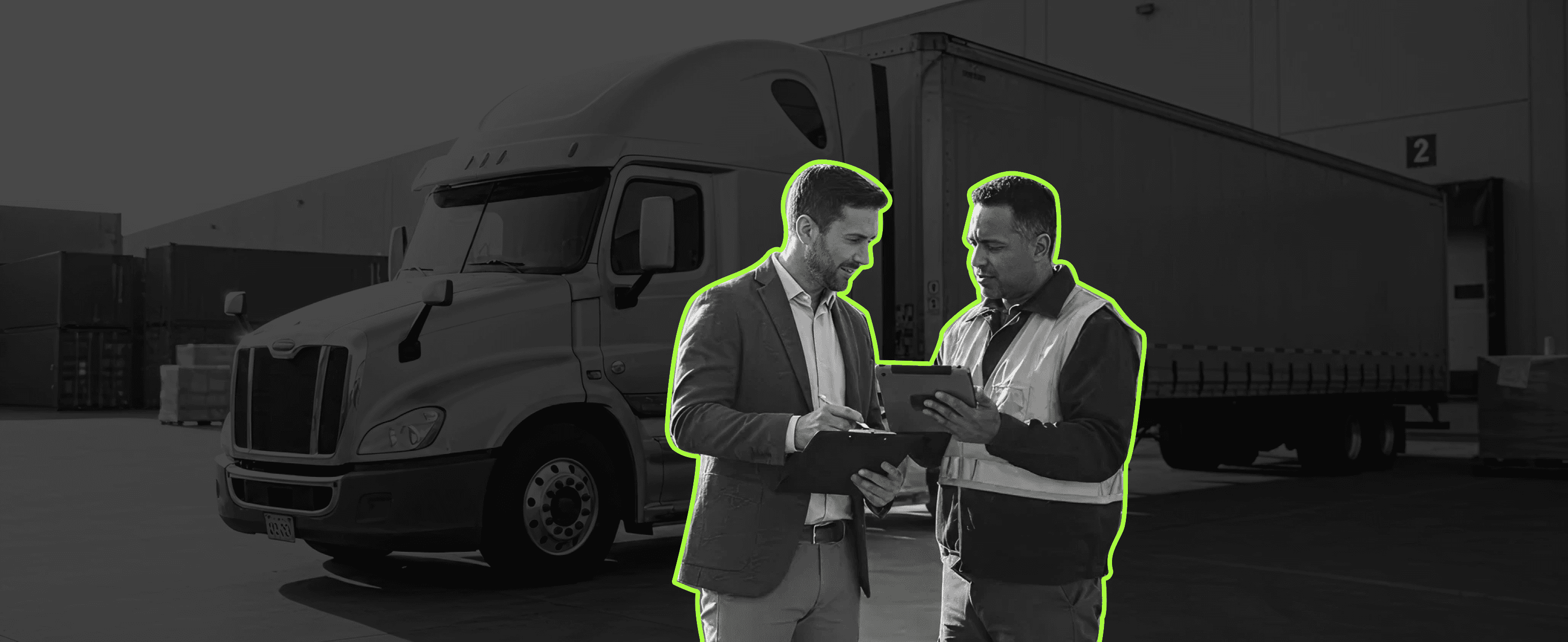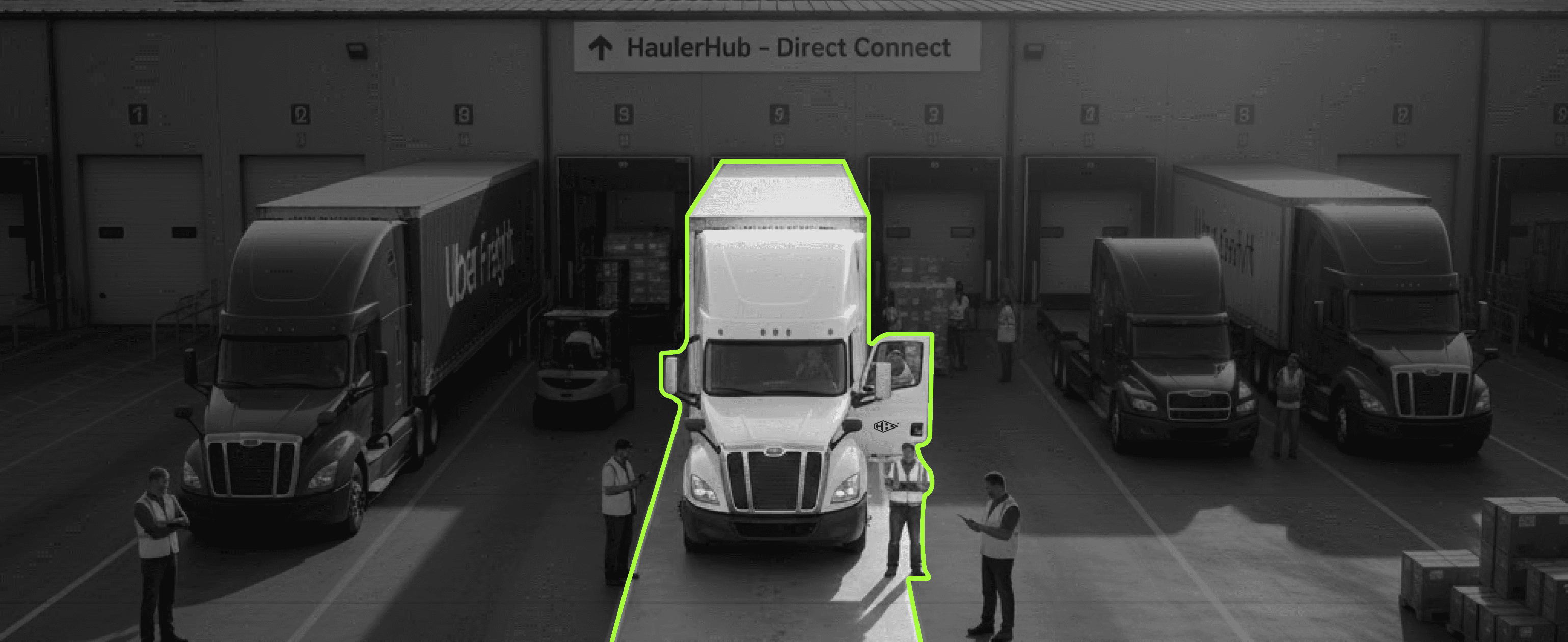Apr 16, 2025
Scroll to explore
Managing a batch of carriers can make even the best logistics teams feel like they're juggling flaming torches. You're constantly coordinating, trying to keep everyone on the same page, and praying nothing falls through the cracks. For operations directors, logistics managers, and supply chain analysts alike, carrier network integration is your ticket to simplicity and efficiency in managing multiple carriers.
Imagine having all your shipping carriers under one umbrella for better management. No more scattered data, no more siloed operations. This is where carrier network integration comes in, offering a streamlined approach to your complex logistics puzzle. Our guide simplifies this process, showing you how to connect everything together in five straightforward steps.
What You Will Learn
Step-by-step guide to integrating your current carrier systems with our advanced API integration.
How to leverage technology for seamless connectivity
Tips for automating and streamlining logistics operations
Understanding the role of API and EDI in integration
How to enhance carrier management and performance with integration
By the end of this guide, you'll have the confidence to tackle your logistics challenges head-on, knowing you can automate and connect carriers without losing control. Let's get you moving towards greater efficiency and less stress.
Step 1: Gather Your Current Carrier Info and Analyze It
Start with What You Have
Before diving into the integration process, you need to understand your current landscape. Gather comprehensive data on your existing carriers. This might include carrier performance metrics, shipping costs, and delivery times.
Why This Matters:
Think of it like trying to solve a puzzle. You wouldn’t throw the pieces away, right? Knowing what you have lays the groundwork for smooth integration. It's like knowing where all the puzzle pieces fit before making changes.
How to Do It:
Data Collection: Compile a list of all carriers you're working with and the services they provide.
Performance Evaluation: Check their on-time delivery rates and customer feedback to identify strengths and weaknesses.
Cost Analysis: Review contracts for shipping rates and additional fees, which can be critical in understanding overall costs.
Avoid Common Mistakes:
Neglecting Details: Overlooked details can lead to costly errors later. Make sure your data is accurate.
Not Engaging Teams: Your team knows valuable insights. Make sure they share with you the daily challenges they face with each carrier.
Pro Tip:
Use a simple spreadsheet or a logistics management software to organize the information. This helps in visualizing and comparing each carrier's performance at a glance, enhancing your multi-carrier strategy.
Step 2: Set Clear Integration Goals
Know Your Destination
Jumping into integration without a clear idea of what you want to achieve is like setting off on a road trip without a map. Goals will guide the process and ensure you're looking at improvements that matter most.
Define Success:
Better Delivery Times: Is faster delivery a priority for your business?
Cost Reduction: Are you aiming to cut down on shipping costs?
Improved Customer Experience: Do you want happier customers with fewer complaints?
What to Consider:
Tech Savvy: Evaluate if your current tech will support new integrations, or if you need upgrades.
Timeline: Set realistic deadlines. Quick wins can boost team morale.
Potential Pitfalls:
Overambitious Goals: Space out milestones to avoid getting overwhelmed.
Ignoring Feedback: Use feedback from departments involved in the process.
Pro Tip:
Communication is key. Regularly update your team on goals and progress. This keeps everyone aligned and focused on common objectives.
By organizing your current carrier network information and setting clear goals, you lay a strong foundation for successful integration. This structural groundwork will ensure that the next steps in your logistics revolution flow smoothly and yield the results you seek. Stay tuned for our next steps in your journey toward a smarter logistics system.
Step 3: Choose Your Carrier Integration Tools Wisely

Find the Right Fit
Choosing the right tools is crucial. You wouldn't use a hammer when you need a screwdriver, right? The right technology can help streamline processes and make your carrier integration efficient.
What to Look For:
Compatibility: Ensure the software is compatible with your existing systems.
Scalability: As your business grows, your integration tool should grow with it.
User-Friendly Interface: It should be easy for your team to learn and use.
Examples of Integration Tools:
API and EDI: These tools allow different software systems to communicate via APIs, ensuring data flows smoothly between you and your shipping carriers.
TMS (Transportation Management System): Helps track shipments, manage delivery options, and provide analytics on carrier performance.
Avoid Common Mistakes:
Overlooking Training Needs: Without proper training, even the best tool won't be effective.
Ignoring Customer Support: Opt for providers that offer 24/7 support in case you encounter any issues.
Pro Tip:
Demo different tools and involve your team in the selection process. They’re the ones who will use these tools daily, so their input is vital.
Step 4: Implement and Test Your Integration
Roll Out the Plan
Now that you’ve chosen your tool, it's time to implement it. A structured rollout and testing phase is essential to catch any bugs or issues before they're too far gone.
Steps for a Smooth Implementation:
Pilot Testing: Start with a small-scale rollout. This could be a single route or one of your smaller carriers.
Feedback Loop: Gather feedback from users to catch any issues early.
Full Deployment: Once all the kinks are ironed out, move to full integration.
Challenges You Might Face:
Resistance to Change: Some team members might be hesitant. Clear communication about the benefits can help.
Technical Glitches: These are common, but a good support system can make them easier to handle.
Pro Tip:
Keep communication lines open across all levels of the company. Whether it’s through regular meetings or updates, ensure everyone is on the same page.
Step 5: Monitor, Adjust, and Optimize
It Doesn’t End Here
Once your system is in place, the work isn’t over. Regular monitoring and adjustments ensure the integration provides the promised efficiencies.
Key Monitoring Metrics:
Carrier Performance: Watch delivery times and accuracy to ensure standards are met.
Cost Efficiency: Regular audits of carrier expenses to identify any areas for savings.
Customer Satisfaction: Using surveys or feedback forms can keep track of any changes in customer happiness.
Adjustment Tips:
Regular Updates: Make sure the software is up to date to support seamless API integration.
Team Training: Consistent training sessions to improve user efficiency.
Why It’s Important:
Neglecting this step can mean slipping back into old inefficiencies. Ongoing optimization keeps everything running smoothly.
Pro Tip:
Keep a checklist handy for regular reviews and updates. This makes it easier to track what’s already been done and what still needs attention.
By following these steps, you're not just setting yourself up for success; you're also paving the way for a future where logistics are less of a headache. The journey doesn't stop here, though.
The next stage could involve even more advanced tools or additional integrations, all designed to propel your company forward.
Stay committed to testing and learning from your processes. This mindset will ensure that your logistics operations stay agile and effective in the future. Keep an eye out for our concluding section, where we tie all the important ideas together and ensure you're ready to take action with confidence.
Final Thoughts: Embrace the Change for Sustainable Success
Wrapping up your journey in carrier network integration, it’s clear that each step you’ve taken is a building block toward a more efficient logistics system. Connecting various carriers under one cohesive network might seem like a monumental task, but with careful planning and execution, it becomes manageable and rewarding.
Why Embrace Integration?
Reduced Complexity: By having all carriers and data in one place, decision-making becomes much simpler.
Enhanced Communication: Fewer systems mean fewer chances for miscommunication, boosting overall performance and satisfaction.
Cost Savings: Streamlining operations often leads to fewer errors and more predictable costs, which can have a substantial impact on your bottom line.
HaulerHub’s Role in Your Journey
For those looking for a reliable partner in this process, HaulerHub stands ready to assist. Our technology platform is designed to directly connect shippers and haulers without the traditional hurdles, making it easier for companies like yours to execute carrier network integration without the headaches.
Dedicated Support: HaulerHub provides a unique value by offering a single point of contact — a dedicated account manager who ensures your transition is smooth from start to finish.
Cost-Effective Solutions: Our business model centers around clear and lower fees, helping you achieve integration cost-effectively.
Customer-Centric Approach: With 24-hour customer service, HaulerHub is committed to ensuring you have continuous support throughout the entire experience journey.
Ready to take the next step toward transforming your logistics operations? It's time to reach out and see how HaulerHub can support your goals. Visit our website today to learn more about our solutions tailored to your unique needs.
Your Steps to Action:
Assess Your Current Systems: Identify what’s working and what needs change.
Engage with Technology: Choose the integration tools best suited for your operations.
Commit to Continuous Improvement: Monitor, adjust, and optimize to maintain efficiency.
Connect with HaulerHub: Explore how our innovative platform can play a pivotal role in your company's successes.
Taking these steps will not only simplify your carrier operations but also boost your company’s adaptability and growth potential. The logistics world is ever-evolving, and embracing integration is your path to staying ahead. Are you ready for smarter, more unified logistics? We believe you're more than equipped to handle this challenge. Let’s get started on making your logistics management as seamless as it can be.
Checkout other blogs

Stay ahead of the supply chain.
Break free from costly and complex systems. Sign up with HaulerHub now and make shipping a breeze.




